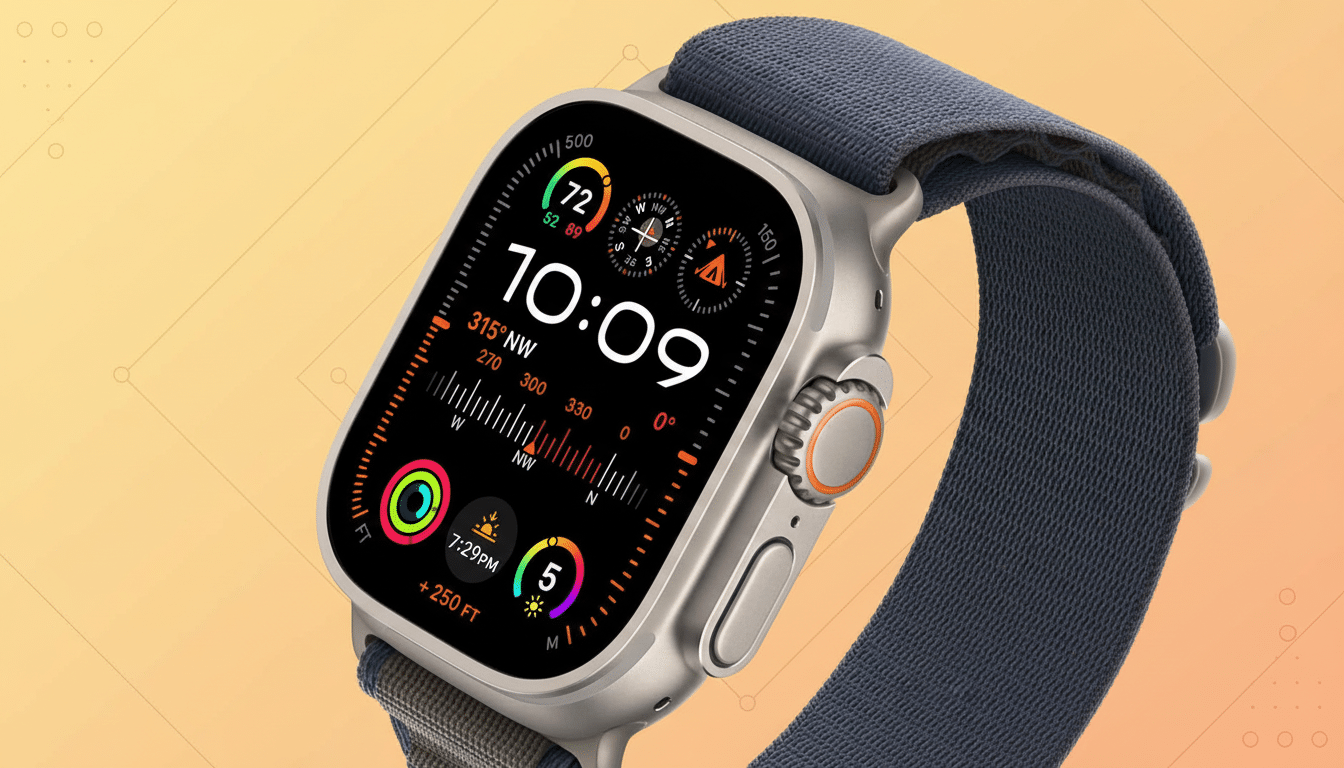I subjected Apple’s new wrist-worn satellite messaging to the same off-grid regimen I have long used to test Garmin’s inReach ecosystem. The question was narrowly constructed by design: When cellular and Wi‑Fi disappear, which tool keeps you better connected in practice? After dozens of runs in varied terrain, controlled tests and side-by-side stopwatch measures—Apple wins for most people; Garmin still dominates at expedition tier.
Which Satellite Links You Actually Get to Use
Apple sends satellite-based messages from the watch across the same Globalstar low‑Earth orbit backbone used for iPhone Emergency SOS, with an intuitive on‑the‑wrist interface teamed with iMessage and standard SMS. Garmin inReach uses the Iridium network, a 66-satellite, cross‑linked service that’s been used by polar guides and deep ocean sailors for years.
- Which Satellite Links You Actually Get to Use
- Off‑Grid Setup and Ease of Use in Real Conditions
- Messaging, SOS, and Tracking: How They Compare
- Battery Life and Durability in Demanding Environments
- Coverage and Cost Reality for Apple and Garmin Users
- Who Should Choose What for Safety and Off‑Grid Travel
- The Verdict: When Apple Wins and When Garmin Prevails

Both functionally provide two‑way text and SOS. The distinction lies in where and how they can be employed. Apple’s service is now available in limited locations only and is designed for short texts and location sharing. InReach works anywhere in the world and features route tracking, MapShare pages, and plan-based weather forecasts that adventurers have come to count on for years.
Off‑Grid Setup and Ease of Use in Real Conditions
Apple’s workflow is remarkably simple. Lift your wrist, launch the satellite tool, and use a simple on‑screen guide to tune in to a passing satellite. They come in loud and clear. It’s fast, discoverable, and—crucially—doesn’t require you to juggle another device. In open clearings, I was consistently locked onto the network in less than 15 seconds; under a light canopy of trees it took a few more seconds, but very rarely did it fail to lock.
InReach is less glamorous and infinitely reliable. You’re better off with a dedicated antenna and physical controls when your hands are cold or gloved. Connecting to a phone through the Garmin Messenger app allows easy typing and threads, but that’s an extra step nonetheless. As an on‑ramp introduction for beginners, Apple’s guidance is more confidence‑inspiring.
Messaging, SOS, and Tracking: How They Compare
On the Apple Watch Ultra 3, garden-variety texts to contacts took about 30 seconds to a minute end‑to‑end in open sky during my testing, though automatic notices told recipients that I was on satellite. Location shares delivered specific coordinates over Apple Maps (also arriving in around half a minute when connected).
Messages sent through the inReach units could take anywhere from less than a minute to a few minutes, depending on terrain and satellite geometry. Where it comes into its own, though, is in structure: you can schedule check‑ins, broadcast track points at set intervals, or let family watch your progress on a public or private page. In SOS cases, Garmin’s IERCC operations center works directly with local responders and stays in touch both ways until a rescue is complete—an approach lauded by mountain rescue groups and documented in annual incident summaries by Garmin that count thousands of activations around the globe.
Battery Life and Durability in Demanding Environments
In mixed use, the Ultra 3 comfortably lasts for a day or so; hits from satellites have some effect but one you can manage. It’s built tough, water‑resistant, and capable of enduring outdoor extremes that would leave many wearables behind, yet it’s still a smartwatch at its core.

InReach hardware is unapologetically utilitarian. The Mini‑class units operate for days to weeks on long tracking intervals, and continue working even if your phone or watch runs out of battery. That redundancy can be a big deal on multiday trips, desert crossings, or high‑latitude journeys when you’re unsure where recharging will be available.
Coverage and Cost Reality for Apple and Garmin Users
Coverage dictates trust. Iridium’s cross‑links make it a truly global service, even at sea and high latitudes. Globalstar’s coverage mirrors the countries Apple supports, and can be spotty in some regions; refer to Apple’s service map before you assume you can count on it outside the backcountry of one of its supported markets.
Costs also differ. Garmin offers monthly or annual plans with tiers that increase message counts, tracking frequency, and weather from seasonal-budget to pro levels. At launch, Apple is including two years of satellite support with the Ultra 3—it hasn’t laid out pricing beyond that. For a lot of occasional adventurers, “included” in the first few years is quite the nudge.
Who Should Choose What for Safety and Off‑Grid Travel
If your activities are day hikes, trail runs, ski tours, or weekend overnights in areas where Apple supports satellite service, the Apple Watch Ultra 3 is the better‑scrubbed solution. It’s already on your wrist, in touch with your contacts, pointing you to a link quickly, sending reliable location drops and short messages without another gadget or plan—which is an important safety net for the people waiting at home.
If you guide, mountaineer, sail offshore, travel in high latitudes, or seek layered redundancy with live tracking and weather, inReach remains the benchmark. With its Iridium infrastructure, its IERCC coordination, and days‑long battery life (that is remarkably immune to cold‑related degradation), it’s the conservative choice when your ass is on the line.
The Verdict: When Apple Wins and When Garmin Prevails
The leading favorite overall is the Apple Watch Ultra 3. It democratizes satellite messaging from a specialist operation to one that is mainstream, with seamless setup and smart integration—making safety more accessible than ever. But the gold standard remains Garmin inReach. Pick Apple for simple and speedy on most off‑grid adventures; Garmin when global coverage, stamina, and mission‑grade tooling take precedence over all else.

